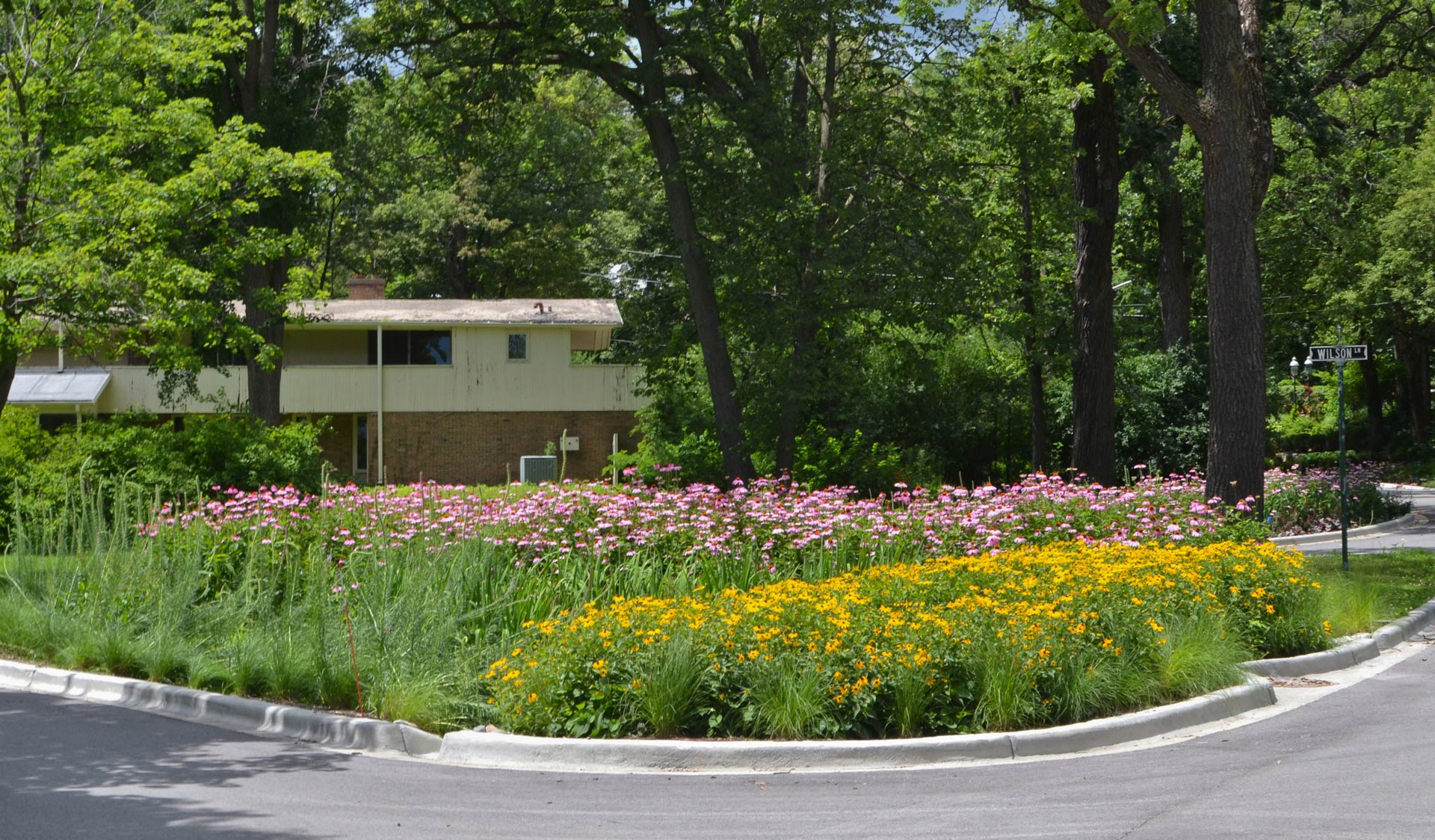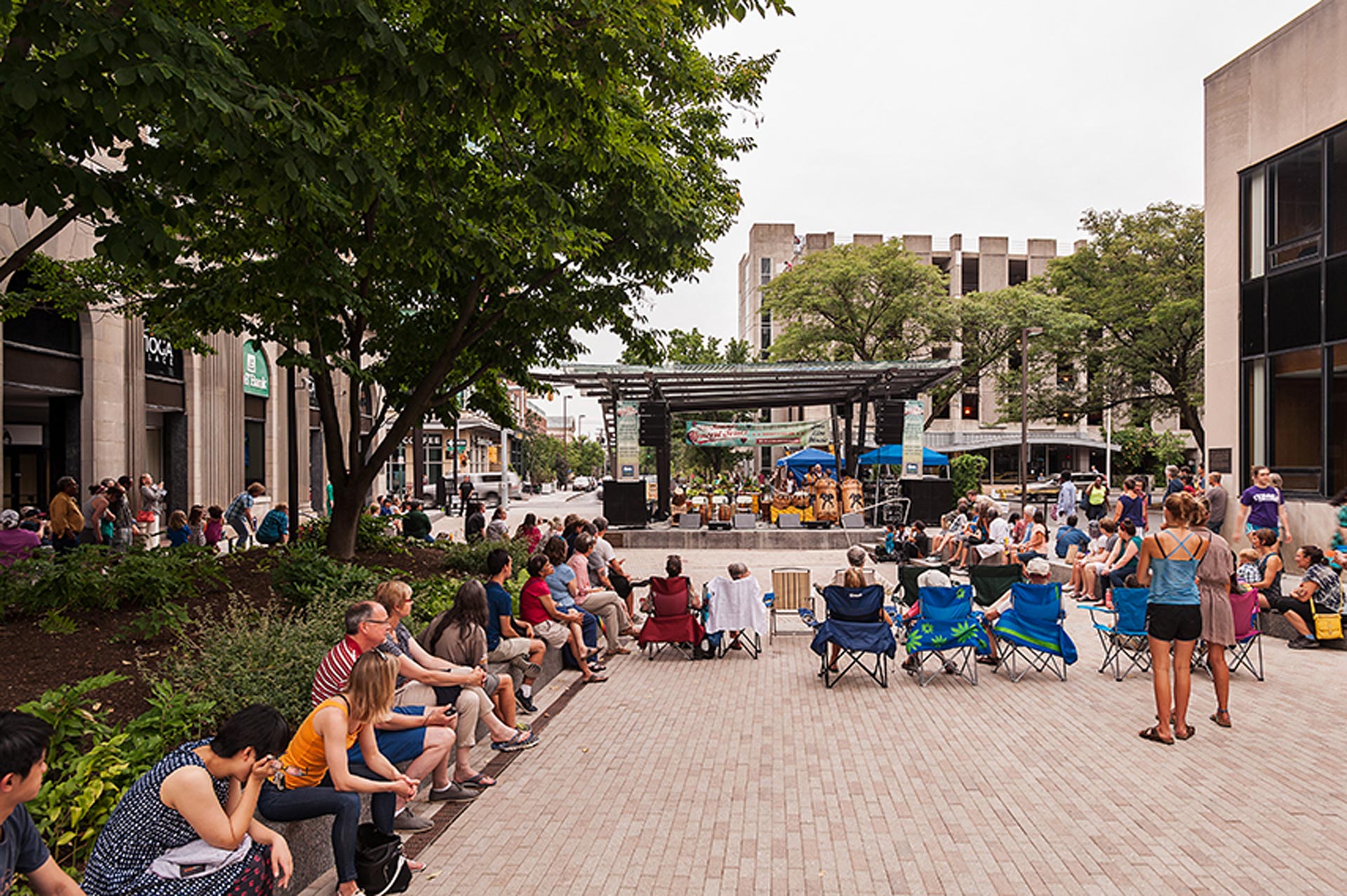Green City: Clean Waters Program, Philadelphia, Pennsylvania
Challenge
The historic erasing of Philadelphia’s surface creeks and streams by converting them to sewers in the late 19th century transformed the city’s hydrological conditions. Of the 283 linear miles of streams that once existed in Philadelphia to carry runoff to the Schuylkill and Delaware rivers, only 118 miles remain today. The present challenge is polluted runoff from city streets, rural farms and upstream mines as well as nuisance flooding from stormwater. Wastewater is treated before it enters the rivers and their tributaries, but rainwater running over rooftops and across yards, farmed fields and roads, picks up pollution and flows unchecked into the rivers and streams. As the amount of paved and hard surfaces increases, so does the amount of runoff and the occurrence of flooding.
Project Details
- Philadelphia, PA
- Population: 1,567,442
- Strategies: Bioswales, Building Rain Gardens, Urban Trees + Forests
Overview/History
Over three hundred years ago, William Penn created the “Greene Country Towne” vision for Philadelphia. As the city grew, it became a hub of politics, technology and business. In keeping with this innovative approach to promoting healthy communities, Philadelphia was the first city in America to supply its citizens with drinking water (1801) and, in 1855, began purchasing land along the Schuylkill River to protect the water supply, creating several thousand acres of buffer known as Fairmount Park, now the world’s largest urban park. However, the eventual pressures of industrialization in the late 19th and early 20th centuries and the difficulties of undertaking expensive and controversial municipal projects during times of war and economic depression, made it hard for the city to make a deeper commitment to water treatment, managing stormwater and sanitation. However, beginning in the early part of the 21st century, reducing pollution from stormwater runoff has been a top priority for city and nongovernmental organizations. With 73% of historic waterways piped to date, the Philadelphia Water Department has a unique opportunity to address modern challenges to managing water resources and infrastructure in an innovative way.
Solution
To meet William Penn’s vision, the Philadelphia Water Department (PWD) is investing in green stormwater infrastructure (GSI) to address combined sewer overflows. Through the Green City, Clean Waters program, the City plans to spend $2.4 billion on capital construction, operating and maintenance costs over a 25-year period. To carry out the program, the PWD is working in partnership with the Philadelphia Parks and Recreation Department (PPR) as well as other city agencies.
Since the program started in 2011, the PWD and private developers have added over 1,100 green stormwater tools around the city. A number of these features are in Philadelphia’s parks. For example, the Shissler Recreation Center was redeveloped from a vacant grass field into a recreation facility and park with stormwater tree trenches and biofiltration basins. At Herron Park and Playground, a new standard has been set for revitalizing and redeveloping neighborhood parks and playgrounds in aging cities. It integrates sustainable stormwater management practices with a bioretention facility, a rain garden, a bioswale, porous pavement, and native planting areas, creating a vibrant and engaging recreation experience. Both the site design and material selection reinforce play spaces in the park while serving to manage stormwater. Many of these design solutions are being used in other city park redevelopments as well. At Cliveden Park, a stormwater demonstration project uses the park’s natural topography to detain and infiltrate stormwater in small upland depressions and an existing wetland. Also, in Fairmount Park, a constructed one-acre stormwater wetland treats an estimated 70 million gallons of urban stormwater per year.
PPR’s Green2015 Initiative has the goal of adding 500 acres of new, publicly accessible green space to the city through the transformation of vacant or underutilized land into parks. New park sites focus on publicly owned land such as vacant lots, schoolyards, and recreation centers in neighborhoods where few parks exist. Incorporating GSI on these sites provides benefits not only for the community, but for both agencies related to acquisition of use and cost-share opportunities.
Funding/Financing
Philadelphia plans to spend $2.4 billion on capital construction, operating and maintenance costs over a 25-year period.
Benefits
The primary benefit of the program is ecological. By implementing a host of green infrastructure solutions, rain may easily soak into the ground and return slowly to streams, restoring the water cycle to a condition more similar to a natural watershed. This provides a natural water quality filter and limits erosion of stream channels caused by high flows. Both of these improvements benefit aquatic species. Also, the PWD’s green stormwater infrastructure approach includes physical restoration of stream channels and streamside lands, including wetlands, to restore habitat needed for healthy ecosystems.
The program brings economic and social benefits as well. Economically, green jobs in the Philadelphia region create up to 250 jobs annually. Also, over the next 45 years, properties near enhanced parks are expected to see an increase of $390 million in residential property values. Socially, green stormwater infrastructure enhances recreational activity. Fairmount Park has seen an increase of 10% more recreational visits since GSI projects have been implemented.
Primary Benefit: Ecological
Additional Benefits: Social, Economic
Sources
Green City, Clean Waters. 2016. Philadelphia Watershed History.
Kramek, Niva and Loh, Lydia. 2007. The History of Philadelphia’s Water Supply and Sanitation System. Lessons in Sustainability for Developing Urban Water Systems.
Philadelphia Water Department (PWD). 2011. Green City Clean Waters. The City of Philadelphia’s Program for Combined Sewer Overflow Control.


